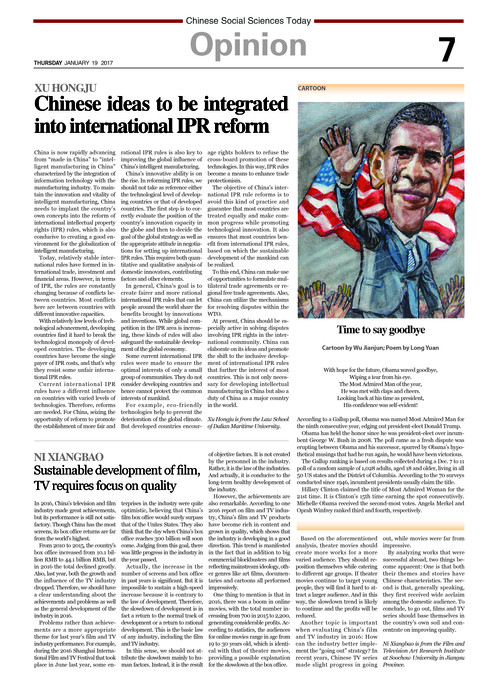Sustainable development of film, TV requires focus on quality
In 2016, China’s television and film industry made great achievements, but its performance is still not satisfactory. Though China has the most screens, its box office returns are far from the world’s highest.
From 2010 to 2015, the country’s box office increased from 10.1 billion RMB to 44.1 billion RMB, but in 2016 the total declined greatly. Also, last year, both the growth and the influence of the TV industry dropped. Therefore, we should have a clear understanding about the achievements and problems as well as the general development of the industry in 2016.
Problems rather than achievements are a more appropriate theme for last year’s film and TV industry performance. For example, during the 2016 Shanghai International Film and TV Festival that took place in June last year, some enterprises in the industry were quite optimistic, believing that China’s film box office would surely surpass that of the Unites States. They also think that the day when China’s box office reaches 300 billion will soon come. Judging from this goal, there was little progress in the industry in the year passed.
Actually, the increase in the number of screens and box office in past years is significant. But it is impossible to sustain a high-speed increase because it is contrary to the law of development. Therefore, the slowdown of development is in fact a return to the normal track of development or a return to rational development. This is the basic law of any industry, including the film and TV industry.
In this sense, we should not attribute the slowdown mainly to human factors. Instead, it is the result of objective factors. It is not created by the personnel in the industry. Rather, it is the law of the industries. And actually, it is conducive to the long-term healthy development of the industry.
However, the achievements are also remarkable. According to one 2016 report on film and TV industry, China’s film and TV products have become rich in content and grown in quality, which shows that the industry is developing in a good direction. This trend is manifested in the fact that in addition to big commercial blockbusters and films reflecting mainstream ideology, other genres like art films, documentaries and cartoons all performed impressively.
One thing to mention is that in 2016, there was a boom in online movies, with the total number increasing from 700 in 2015 to 2,200, generating considerable profits. According to statistics, the audiences for online movies range in age from 19 to 30 years old, which is identical with that of theater movies, providing a possible explanation for the slowdown at the box office.
Based on the aforementioned analysis, theater movies should create more works for a more varied audience. They should reposition themselves while catering to different age groups. If theater movies continue to target young people, they will find it hard to attract a larger audience. And in this way, the slowdown trend is likely to continue and the profits will be reduced.
Another topic is important when evaluating China’s film and TV industry in 2016: How can the industry better implement the “going out” strategy□ In recent years, Chinese TV series made slight progress in going out, while movies were far from impressive.
By analyzing works that were successful abroad, two things become apparent: One is that both their themes and stories have Chinese characteristics. The second is that, generally speaking, they first received wide acclaim among the domestic audience. To conclude, to go out, films and TV series should base themselves in the country’s own soil and concentrate on improving quality.
Ni Xiangbao is from the Film and Television Art Research Institute at Soochow University in Jiangsu Province.


